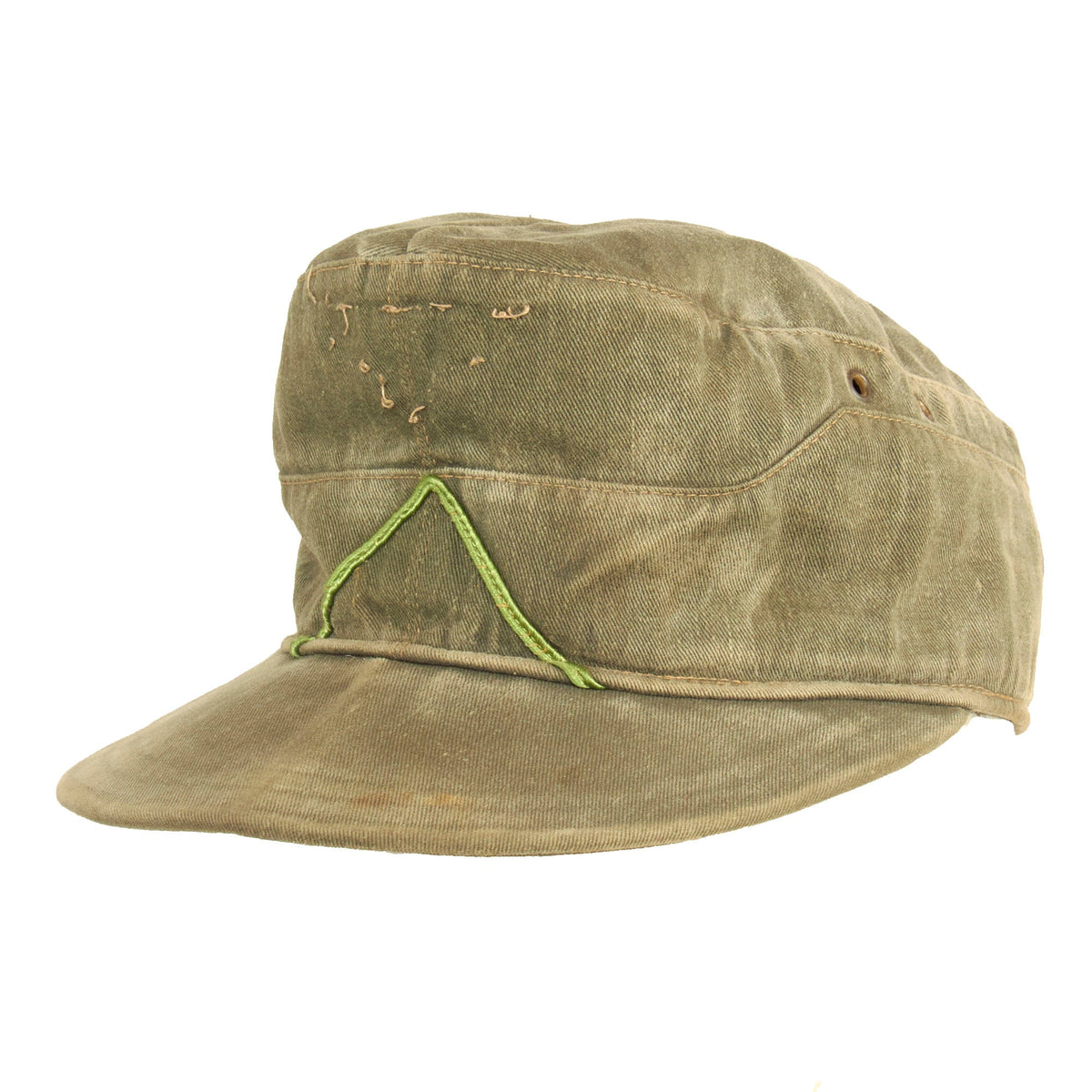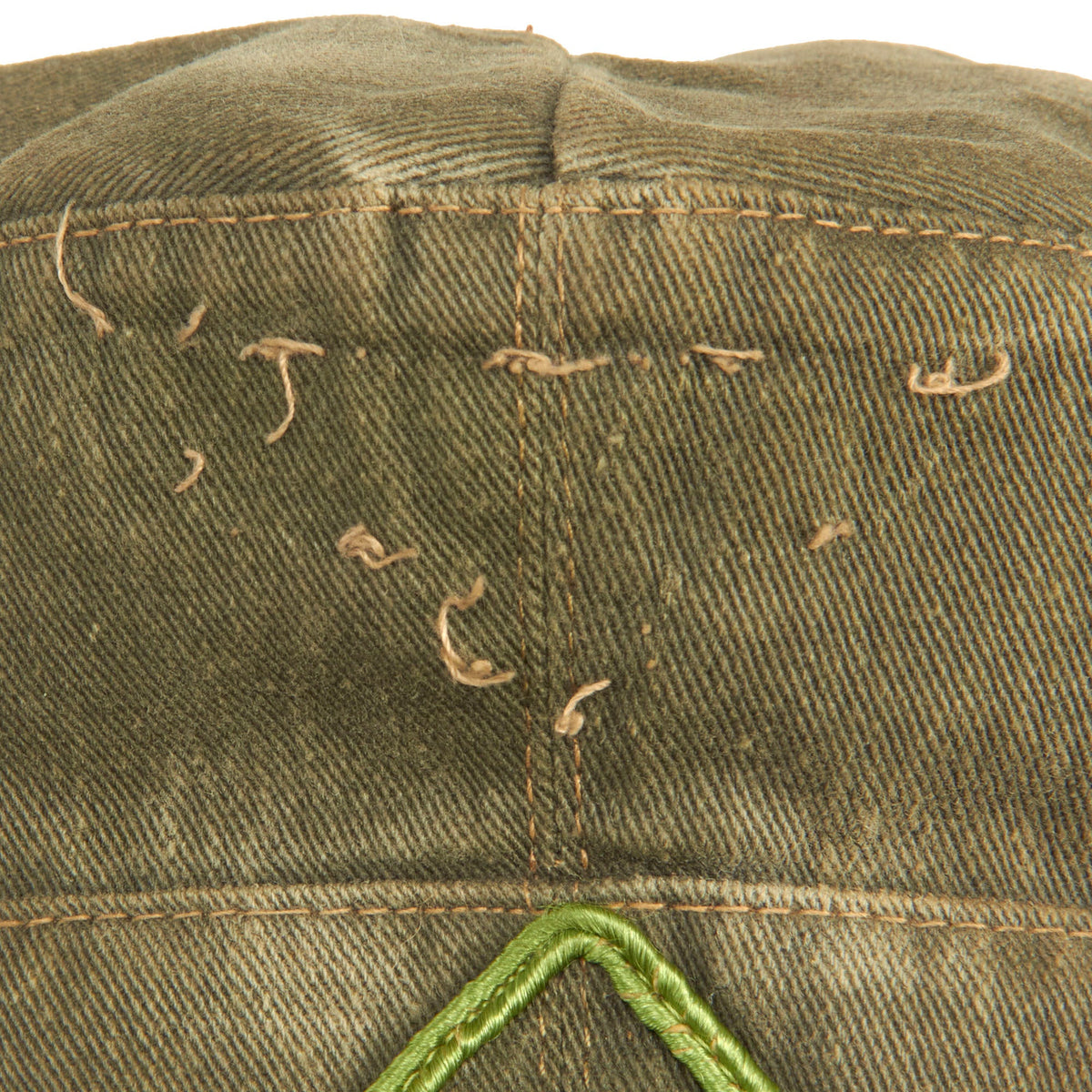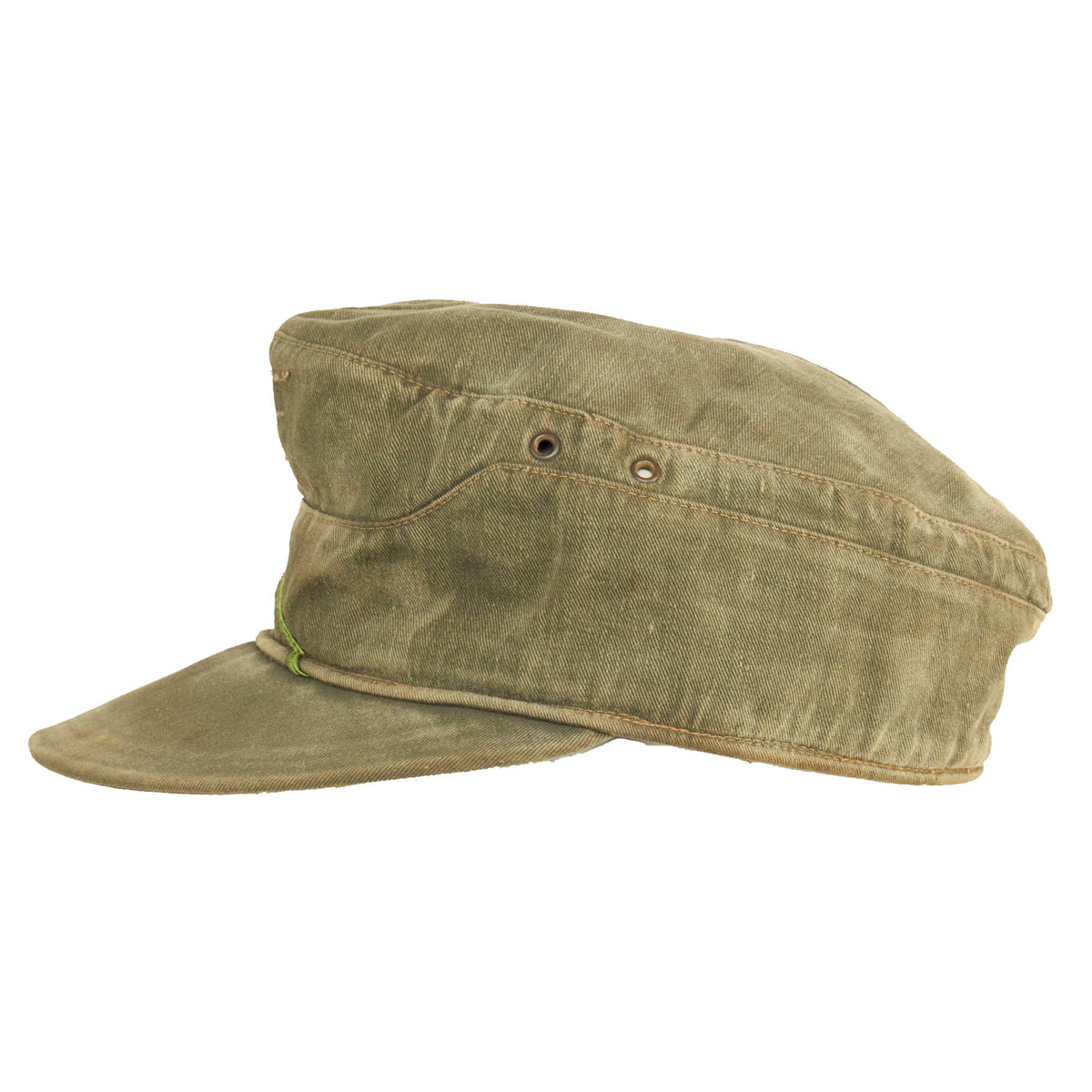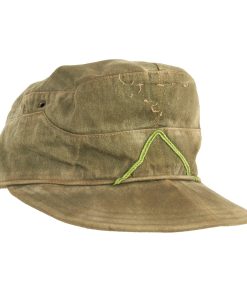Original German WWII “P.O.W. Worn” Afrika Korps Panzergrenadier M43 Tropical Field Cap – Removed Insignia Original Items
$ 895,00 $ 223,75
Original Item: Only One Available. In late 1940, with the impending German entrance into the North African campaign, tropical uniforms headgear and equipment were quickly developed and issued in time for DAK, Deutsches Afrika Korps, (German Africa Corps), personnel’s arrival in Tripoli in February 1941.
The M41 tropical field cap was introduced in early 1941 and design of the cap was loosely based on the Mountain Troopers, Bergmütze with minor variations. Officer ranks caps were distinguished from EM/NCO’s with silver piping for the ranks of Lieutenant to Oberst and gilt piping for the ranks of Generalmajor to Generalfeldmarschall while EM/NCO’s ranks caps were not piped. The different branches of service within the army were allocated a particular identifying waffenfarbe, (Branch of Service Color), and originally the M41 tropical field caps had a branch of service soutache applied to the front consisting of an inverted “V” encompassing the national tri-color cockade but regulations of July 10TH 1942 abolished the use of the soutache and instructed it to be removed from the caps, although the directive was not strictly adhered to.
This wonderful “P.O.W. Worn” is correct in all respects, aside from the removed insignia. removal of country specific insignia was very common practice on both sides. It features ribbed olive/khaki cotton twill construction, dual-ply, stitched down side and back panels with a gently scalloped downward slope to the front center. The cap has two ventilation grommets to each side positioned just below the outer edge of the crown seam. The top center seam is correctly stitched right through the interior liner for added strength. The interior of the cap is fully lined in light weight red cotton, which no longer shows any markings.
The cap has a cotton twill covered, forward visor with an internal cardboard stiffener. The visor has a subtly raised lip to the top of the forward edge and dual rows of reinforcement stitching to the bottom of the forward edge. Attached to the front of the cap above the visor is a Soutache in Wiesengrün (meadow green), the Waffenfarbe (corps color) for Heer Panzergrenadiertruppen (Panzer Grenadier Troops). These were motorized / mechanized infantry troops, and were legendary in the field. Originally called Schützen regiments, they had used the same Pink piping as the Panzer corps. Then in 1942 Infantry Regiments were renamed as Grenadier Regiments by AH as a historical homage to Frederick the Great’s Army, and the Schützen were renamed to Panzergrenadiers. The soutache is sewn directly into the front of the cap along with the visor, so this was originally produced with the soutache, and it is not a later addition.
Overall condition is very good considering the amount of service it must have seen. There is quite a bit of staining on the inside around the forehead area, and the exterior shows overall fading of the olive green canvas. The visor is still relatively solid, though it does have a bend near the middle. The cardboard would become soft over time, so it is very rare to see these without some type of bend to the brim.
A lovely “P.O.W. Worn” example of a Panzergrenadier Tropical Field cap. Ready to add to your collection and display!
The Afrika Korps or German Africa Corps (German: Deutsches Afrikakorps, DAK was the German expeditionary force in Africa during the North African Campaign of World War II. First sent as a holding force to shore up the Italian defense of their African colonies, the formation fought on in Africa, under various appellations, from March 1941 until its surrender in May 1943. The term “Afrika Korps” is pseudo-German (so-called “cod-German”), deriving from an incomplete German title. The German term referred solely to the initial formation, the Deutsches Afrikakorps (DAK), which formed part of the Axis command of the German and Italian forces in North Africa. The name stuck, with both news media and Allied soldiers, as the name for all subsequent German units in North Africa. The unit is known for having been commanded by Field Marshal Erwin Rommel.
Fast Shipping with Professional Packaging
Thanks to our longstanding association with UPS FedEx DHL, and other major international carriers, we are able to provide a range of shipping options. Our warehouse staff is expertly trained and will wrap your products according to our exact and precise specifications. Prior to shipping, your goods will be thoroughly examined and securely secured. We ship to thousands clients each day across multiple countries. This shows how we're dedicated to be the largest retailer on the internet. Warehouses and distribution centres can be located throughout Europe as well as the USA.
Note: Orders with more than one item will be assigned a processing date depending on the item.
Before shipping before shipping, we'll conduct a thorough inspection of the items you have ordered. Today, the majority of orders will be delivered within 48 hours. The delivery time will be between 3-7 days.
Returns
The stock is dynamic and we cannot completely manage it because multiple stakeholders are involved, including our factory and warehouse. So the actual stock may alter at any time. It's possible that you may not receive your order once the order has been made.
Our policy is valid for a period of 30 days. If you don't receive the product within 30 days, we are not able to issue a refund or an exchange.
You can only return an item if it is unused and in the same state as the day you received it. You must have the item in its original packaging.
Related products
Uncategorized
Uncategorized
Uncategorized
Uncategorized
Uncategorized
Uncategorized
Uncategorized
Uncategorized
Uncategorized
Uncategorized
Uncategorized
Uncategorized
Uncategorized
Uncategorized
Uncategorized
Uncategorized
Uncategorized
Uncategorized













































































